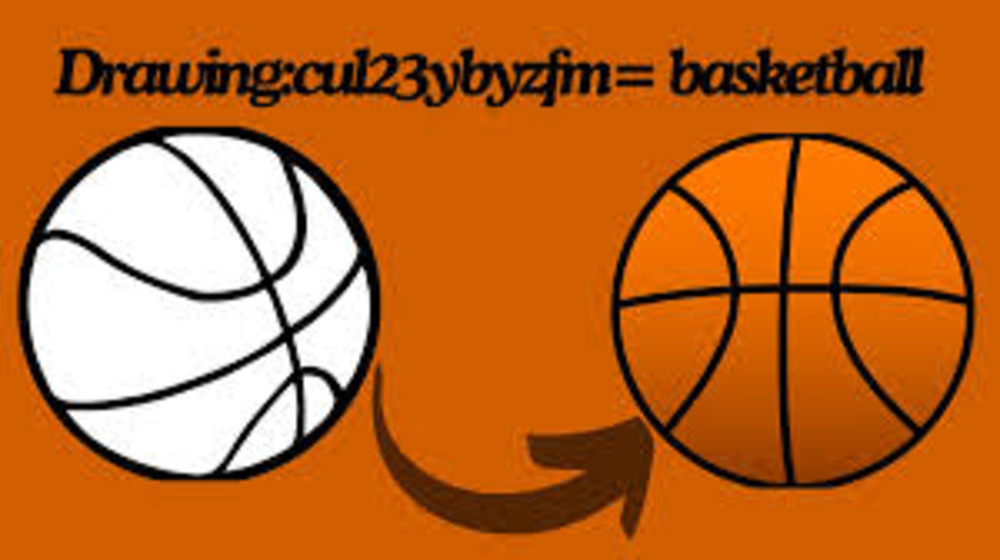
Introduction
Drawing:cul23ybyzfm= basketball scenes offers a dynamic opportunity to portray movement, athleticism, and intense action on paper. Capturing the essence of basketball means focusing on the fluidity of the game, from dribbling and shooting to defensive plays and dunks. The game’s high energy, fast pace, and the physicality of the players make it an exciting subject for artists looking to express motion and emotion through their work. Whether you’re sketching a simple basketball or illustrating a complex scene of players in action, mastering the art of drawing basketball requires attention to detail, perspective, and a solid understanding of anatomy.
Capturing Player Motion Anatomy and Proportions
One of the most challenging aspects of Drawing:cul23ybyzfm= basketball is capturing the players in motion. Basketball is a high-speed sport with quick changes in direction, jumping, pivoting, and intense contact between players. Understanding human anatomy and proportions is essential for portraying the players in action. The legs, arms, torso, and head all work in coordination when a player dribbles, shoots, or defends. Each part of the body must be depicted in the correct proportion to ensure realism. The legs, for instance, should be muscular and dynamic, especially when sketching a player mid-jump or sprinting.
Conveying Emotion Through Facial Expressions
Drawing:cul23ybyzfm= basketball, emotions run high – players experience moments of intense focus, joy, frustration, or celebration. Capturing these emotions through facial expressions adds another layer of depth to your drawing. A player making a game-winning shot may show concentration and determination, with furrowed brows and a set jaw. On the other hand, a defensive player might display intensity, with gritted teeth and wide eyes, as they attempt to block a shot or steal the ball. Even subtle expressions, such as a player’s focused gaze or a celebratory smile, can add realism and human connection to your basketball artwork.
Drawing the Basketball Court Perspective and Depth
The basketball court itself is a key element in any Drawing:cul23ybyzfm= basketball. Whether you’re illustrating a one-on-one game or a full match, the court provides context and depth to the action. Drawing the court accurately requires knowledge of perspective, as the flat surface must be portrayed in a way that gives the illusion of depth. The three-point line, free-throw line, and center circle are essential markers that help frame the scene and orient the players. If you’re drawing a scene from above or from the sidelines, it’s important to adjust the lines of the court accordingly to match the perspective.
Shading and Lighting Creating Dynamic Action
 Shading and lighting are essential to creating depth and dimension in your Drawing:cul23ybyzfm= basketball. Players, as they move across the court, interact with light in various ways – their muscles are highlighted, shadows are cast as they jump or pivot, and the ball itself may catch the light in ways that emphasize its texture. Whether you’re using pencil, ink, or digital tools, focusing on how light plays across the scene enhances the realism. For instance, a player leaping for a dunk will have shadows cast beneath their body, and the basketball might reflect light at certain points, depending on its position relative to the light source.
Shading and lighting are essential to creating depth and dimension in your Drawing:cul23ybyzfm= basketball. Players, as they move across the court, interact with light in various ways – their muscles are highlighted, shadows are cast as they jump or pivot, and the ball itself may catch the light in ways that emphasize its texture. Whether you’re using pencil, ink, or digital tools, focusing on how light plays across the scene enhances the realism. For instance, a player leaping for a dunk will have shadows cast beneath their body, and the basketball might reflect light at certain points, depending on its position relative to the light source.
Depicting the Ball in Motion Energy and Movement
One of the most iconic symbols of Drawing:cul23ybyzfm= basketball is the ball in motion. Whether it’s being dribbled, passed, or shot, capturing the movement of the ball is essential to conveying the pace of the game. In your drawing, you can show this movement through various techniques, such as drawing motion lines or showing the ball at different stages of its trajectory. For example, when illustrating a player shooting a basket, the ball’s arc can be traced, suggesting its path toward the hoop. Additionally, shading the ball to reflect its spinning motion adds further dynamism to your drawing, making the action feel more lifelike.
Clothing and Equipment Adding Detail to the Scene
The uniforms, shoes, and equipment used in basketball are important elements that add detail and authenticity to your drawing. Basketball jerseys, for example, often feature team logos, numbers, and names, all of which need to be carefully rendered to ensure accuracy. The baggy nature of basketball shorts allows for a lot of folds and creases, which change depending on how the player moves. Shoes are another critical aspect, as they grip the court and affect how the player jumps or pivots. Paying attention to these details brings realism to your drawing and shows your dedication to capturing the full essence of the sport.
Creating a Crowd The Atmosphere of a Basketball Game
While the players and the ball may be the central focus of your Drawing:cul23ybyzfm= basketball, adding a crowd in the background can enhance the atmosphere of the basketball game. Whether you choose to sketch a detailed audience or suggest a packed arena through simple shapes and shading, the crowd adds excitement and energy to the scene. A roaring crowd can amplify the intensity of a clutch moment, such as a last-second shot or a fast break. The inclusion of fans, cheerleaders, or even coaches on the sidelines can turn a simple basketball sketch into a full representation of a live game, capturing not just the action but the overall experience of basketball.
From Pencil to Digital: Techniques for Different Mediums
The medium you choose for your Drawing:cul23ybyzfm= basketball drawing significantly influences the final product. Traditional mediums like pencil, charcoal, or ink provide a hands-on, tactile approach that allows for expressive shading and detailing. Pencil sketches are excellent for capturing the fluidity of movement and the subtle variations in light and shadow. On the other hand, digital art opens up a world of possibilities, with tools that allow for precise lines, smooth shading, and the ability to quickly adjust perspective or add layers of color. Digital artists can also use brushes to simulate texture, whether it’s the grain of the basketball or the fabric of a jersey.
Drawing Iconic Basketball Moments
Drawing:cul23ybyzfm= basketball moments can be a powerful way to capture the emotion and history of the sport. Whether it’s a game-winning buzzer-beater, a slam dunk contest, or a pivotal defensive play, immortalizing these moments through art requires an understanding of the drama and tension that makes them memorable. When recreating such moments, it’s important to focus on the key players, their positioning, and the emotions on their faces. The crowd’s reaction, the anticipation in the player’s posture, and the ball’s trajectory all contribute to the story being told through the drawing.
Basketball as an Art Form The Intersection of Sports and Creativity
Drawing:cul23ybyzfm= basketball like art, is about expression, creativity, and rhythm. When players are on the court, their movements are akin to a dance – there’s a flow, a strategy, and a visual poetry in the way they handle the ball and interact with each other. Drawing basketball allows artists to tap into this rhythm and express the game’s fluidity through their own artistic lens. Whether focusing on an individual player, a full team, or the ball itself, each element of the game offers a chance to explore new techniques, perspectives, and styles. For artists, basketball isn’t just a sport; it’s an opportunity to convey energy, intensity, and emotion through the timeless medium of drawing.
Final Thoughts
Drawing:cul23ybyzfm= basketball is more than just depicting athletes and a ball; it’s about capturing the spirit of the game. Whether you’re illustrating a simple streetball game or an intense NBA matchup, the challenge lies in portraying the movement, energy, and emotion that define basketball. From understanding human anatomy and proportions to mastering perspective, shading, and movement, drawing basketball requires a combination of technical skill and creative expression. By focusing on the key elements of the game—players, the ball, the court, and the crowd—you can create dynamic, engaging artwork that brings the game of basketball to life on paper or screen.
You May Also Read: Timberwolves vs Lakers Match Player Stats


